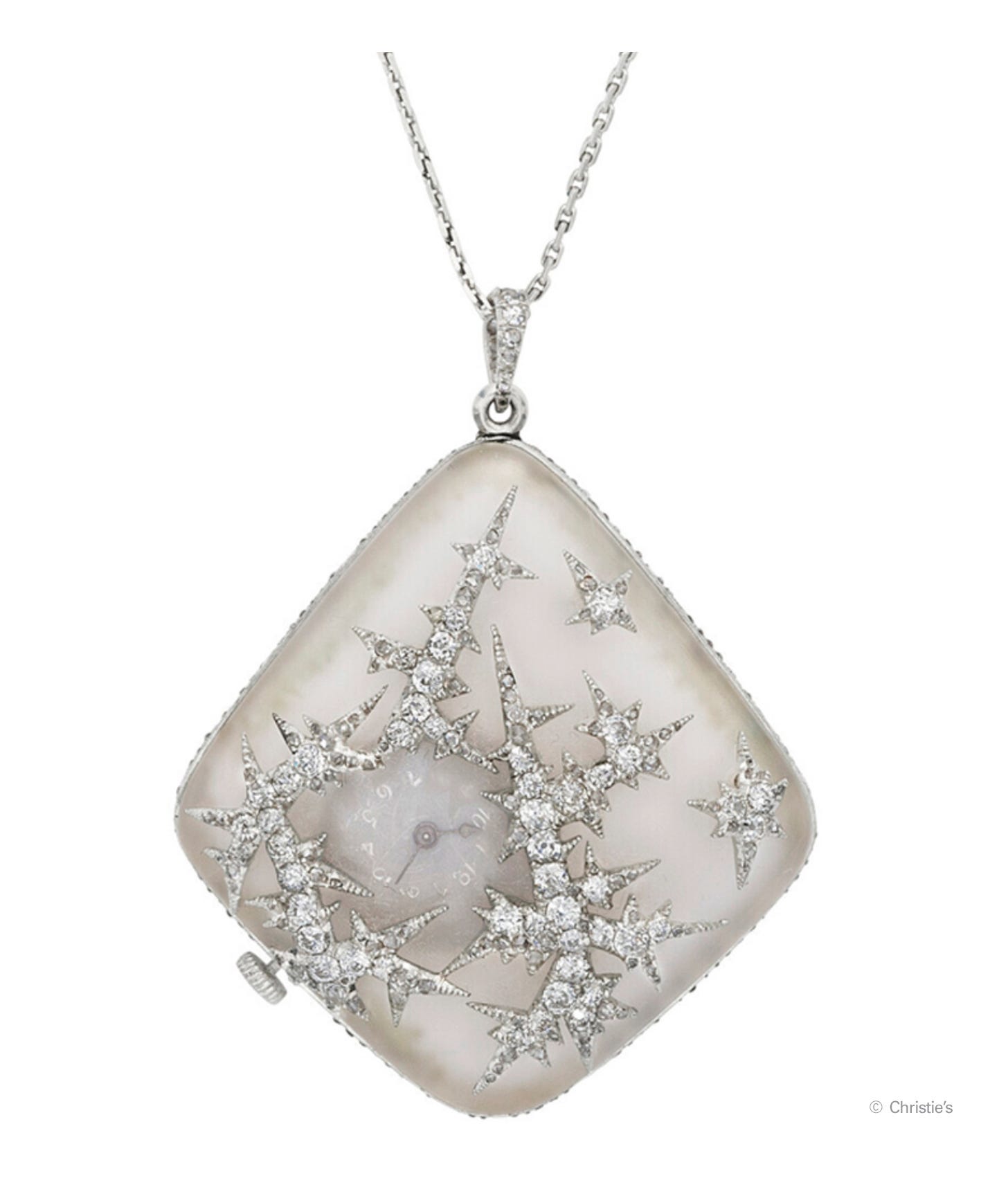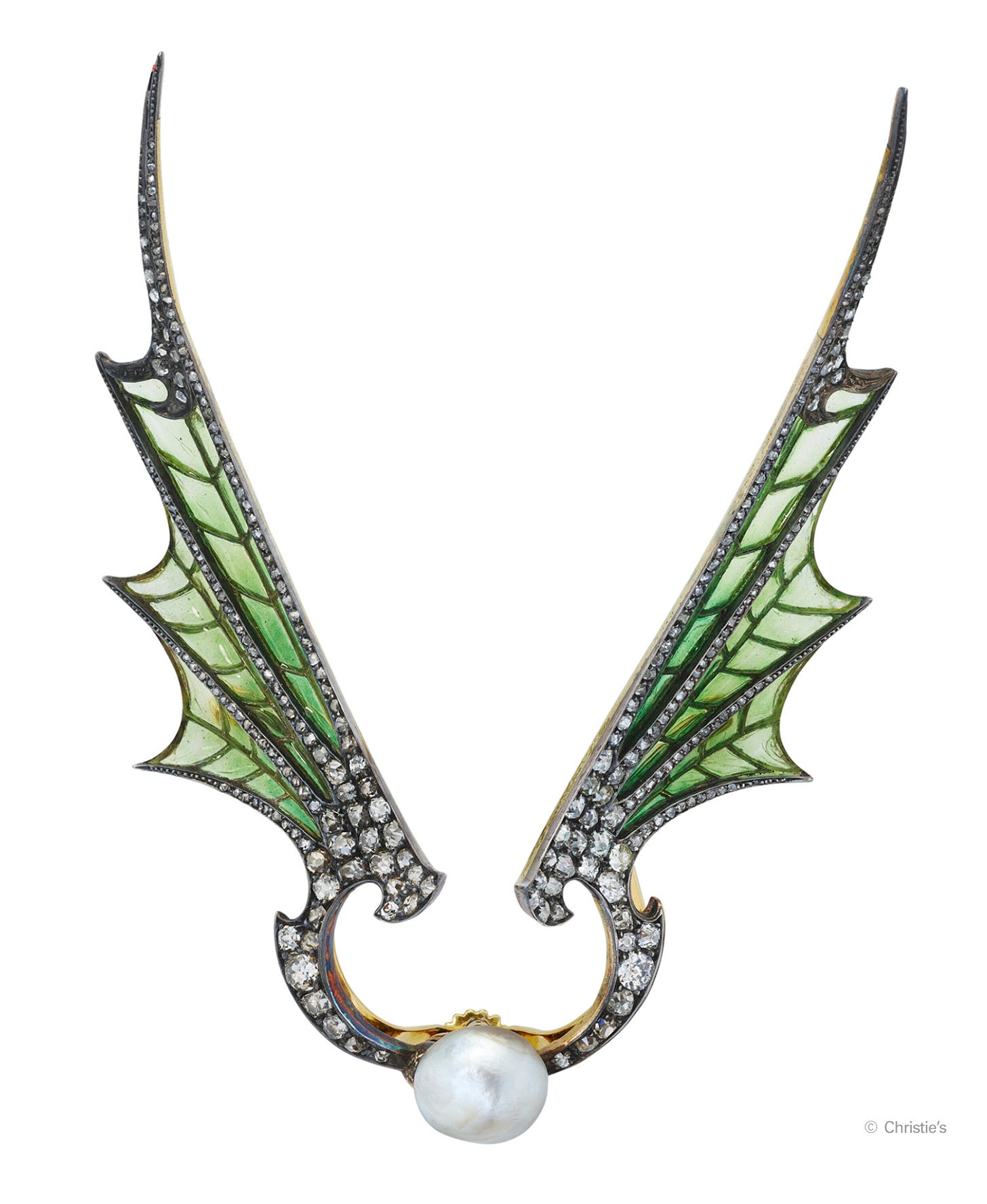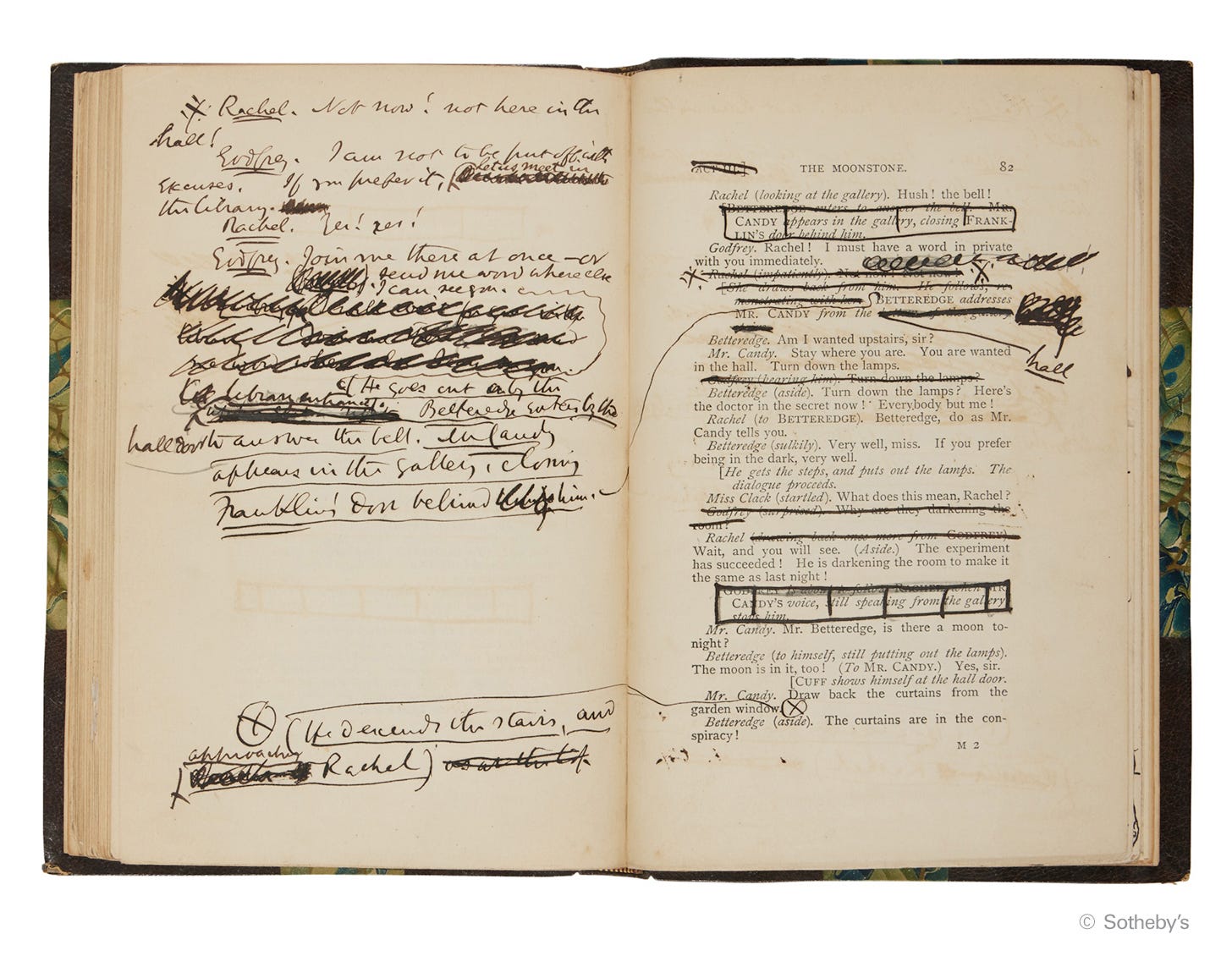Hi friends, I apologize for being a wee bit late with this one; there’s just way too much going on right now. This is Magnificent Jewels week in New York Citaay, and there’s loads of interesting stuff to cover so I’m going to try to tamp down on the tangents in favor of MORE STUFF. [Note: this obviously didn’t happen, lol, so stay tuned for Part 2 next week.]
First up, the 5.27-ct emerald in the ring above was cut from a rough stone found in the wreckage of the Spanish galleon Nuestra Señora de Atocha. The Atocha — which was absolutely LOADED with treasure — sank off the coast of Florida during a hurricane in 1622. Sotheby’s catalogs the extent of its cargo:
The ship’s hold contained some 180,000 coins and 24 tons of ingots struck from Bolivian silver as well as 125 bars of gold bullion extracted from the Caribbean, Mexico and the Andes amongst its many treasures.
In addition to precious metals, the ship’s detailed log recorded an astonishing 70 pounds of rough-cut emeralds mined from Colombian sources in Chivor and Muzo which the Spanish had first learned of in the early 16th century.
SEVENTY POUNDS OF EMERALDS.
After nearly 20 years of searching, American treasure hunter Mel Fisher discovered the wreckage of the Atocha in 1985. The worth of the treasure was estimated at $400 million in the original New York Times coverage of the find — Smithsonian Magazine puts it at closer to $1 billion today — and it made Fisher and his investors very wealthy people.1
One of Fisher’s earliest and most enthusiastic supporters was Frank Perdue (yes, the chicken guy). As an investor, Perdue was entitled to a share of the treasure, but he promptly donated almost all of his loot to the Smithsonian Institution and Delaware Technical Community College. He only kept one emerald for himself — the one above, which he had faceted from the original rough crystal — and it sat in a safe until he met his soon-to-be third wife, Mitzi. After a whirlwind long-distance courtship, he had the emerald set in an engagement ring and the couple were married in 1988.
Mitzi, a writer and philanthropist, wore the ring until Frank’s death in 2005. She’s currently involved in efforts to prevent human trafficking in Ukraine, and she visited the country last spring after receiving an invitation from the head of the Kyiv Regional Police. "I spent five days there," she told Town & Country. "My first night was in a bomb shelter, so it was eventful.” She returned home even more determined to raise funds for the cause, and that’s when she decided to sell her beloved ring and donate the proceeds to humanitarian efforts in Ukraine. The Daily Beast talked to her about the decision:
“Giving up the ring is bittersweet, Mitzi admits. It is beautiful—a piece of history—and it reminds her of Frank. But, she said, ‘if you weigh the good that it could do versus the pleasure of holding it in my hand, I’ll take the good it could do.’”
The ring is included in the Sotheby’s New York Magnificent Jewels auction on Wednesday, and it carries an estimate of $50,000 - $70,000 — which seems super low, but this is one of those situations where a piece is so rare, unusual or historic that it’s impossible to ballpark just how much someone might be willing to pay. In these cases, auction houses sometimes base their estimates solely on the measurable aspects of the item — size, condition, etc. — and ignore all the ephemeral stuff. And lower estimates don’t necessarily hurt — they can actually drive up interest and bids, because more people feel like they have a chance. I’m very curious to see what this ring will eventually sell for.
Oh and btw — the 70 lbs. of emeralds? Mel Fisher’s son Kim runs the business now, and he says they’ve only found 6 lbs. so far. Sitting here, daydreaming about 64 lbs. of emeralds hidden in the seabed…….it kinda makes his dad’s multi-decade obsession a little more understandable.
This Cartier “Mauna” necklace is a recent creation, but that hasn’t stopped Sotheby’s (and, previously, the New York Times) from invoking the name of Jeanne Toussaint, the jewelry designer who was appointed Director of Fine Jewelry at Cartier in 1933. Toussaint is credited with developing the iconic Cartier panther motif — she had a longtime relationship with Louis Cartier, who called her his “Petite Panthére” — and the Times notes that she was also known for using imperial topaz sourced from Russia.
This “Mauna” necklace features three spectacular imperial topazes, but they’re from Brazil, not Russia. All three are bicolor — the two top emerald-cut stones show a color change from a warm orange to pink, but the 10.88-ct pear-shaped drop practically explodes with colors ranging from oranges and reds to an electric fuchsia. Matching color variations of orange and pink sapphires accent the necklace along with diamonds and a large hexagonal rutilated quartz at the center. (There’s also a set of earrings.)
I don’t know about you all, but I am SO drawn to that orange/fuchsia color combo. And the unexpected addition of the rutilated quartz, with its needle-like inclusions of bright, coppery rutile (a mineral composed of titanium dioxide) truly sets this piece apart. The set is estimated at $200,000 - $300,000, and is also included in tomorrow’s Magnificent Jewels auction at Sotheby’s.
A year ago, I told you guys about the young Fabergé apprentice Alma Pihl and her unconventional designs. That post focused on her intricate, cross stitch-inspired mosaic style, but I’m going to revisit her now because an example of her most famous motif — the “frost” motif — is going up for sale in today’s Magnificent Jewels auction at Christie’s New York.
The design grew out of a very specific order from one of Fabergé’s most dedicated clients. The lot essay sets the scene:
One winter morning in 1911, Dr. Emanuel Nobel, esteemed habitué of Fabergé, paid a hasty visit to the firm. He said that he urgently needed around 40 small brooches and had specific parameters for his order: The jewels should have a new and fresh design and they should not be made of a costly material – if broken up, not much intrinsic value was to remain. Dr. Nobel was planning a gala dinner to which he had invited his most important clients. His idea was to hide a small gift of jewelry in the napkin of the wife of each of his clients at the dinner table, and he was, therefore, most desirous that the gifts not be mistaken for bribes.
Alma — the niece of Fabergé’s head jeweler Albert Holmström — was given the assignment. As she sat at her desk trying to come up with ideas, she noticed the glittering frost patterns that were branching across the nearest window. She started to sketch the patterns into a series of brooch designs and showed them to her uncle. He and Fabergé both approved the theme, and the designs were quickly put into production.
Dr. Nobel loved the resulting brooches and went on to commission a ton of frost-themed items, asking Fabergé for a personal monopoly on the motif — which he was given, with the sole exception of one piece: the Imperial Winter Easter Egg, which also was designed by Alma. (Nobel commissioned his own frosty egg as well, and it’s always been my favorite.)
The “Frost” watch-pendant above was probably a Nobel commission from around 1914, and it features a trapezoidal matte-finished watch cover of rock crystal, with an applied frost pattern of rose-cut diamonds set in platinum. It’s estimated at $80,000 – $120,000.
There are, of course, lots of giant diamonds and whatnot in the Christie’s Magnificent Jewels auction, but my eye keeps being drawn to this circa 1907-1908 Art Nouveau “Wings” brooch by Georges Fouquet (1862-1957). It’s nearly five inches tall (and 3.25 inches wide) and the wings are adjustable, so this is very much a bold statement piece.
I could have sworn I’d featured the exceptionally talented Georges Fouquet in Dearest before, but apparently I haven’t?! Well, better late than never. Georges was a second generation jeweler: his father Alphonse started their company in 1862 in Paris, and Georges joined the business just as Art Nouveau was taking off in the late 19th century. (His own son, Jean, eventually joined in as well, and his bold Art Deco designs brought him his own fame.)
Georges is renowned for creating some of the greatest Art Nouveau jewels to come out of the era — including a collection designed in collaboration with the Czech artist Alphonse Mucha. Mucha also designed Fouquet’s shop, and, as Art Nouveau faded out in the 1920s, Georges dismantled and stored much of the interior and exterior, which he later left to the Musée des Arts Décoratifs. The shop was reassembled in Paris at the Musée Carnavalet in 1989, and you can see some images of it here.
The “Wings” brooch is made of silver-topped gold, with green plique-à-jour enamel and accents of old and rose-cut diamonds. The wings are adjustable — I’m guessing via a hinge behind the baroque pearl at the center. It’s estimated at $30,000 – $50,000.
This book was Wilkie Collins’ personal copy of the stage adaption of his novel The Moonstone. Titled The Moonstone: A Dramatic Story, in Three Acts. Altered from the Novel for Performance on the Stage, the book was privately printed for Collins in 1877 and it’s HEAVILY annotated, with entire pages crossed out and rewritten in the hand of the author. Jewelry’s cool and all, but this is the kind of thing that really makes my hands itch with desire.
It’s included in the Age of Wonder auction at Sotheby’s New York on December 9, and has an estimate of $30,000 - $50,000.
Anybody looking for a Tyrannosaurus Rex skull? This one’s going up for sale in a single lot auction also at Sotheby’s New York on December 9th, and they’re so excited about it they dipped into all caps for the catalog note:
ONE OF THE BEST AND MOST COMPLETE TYRANNOSAURUS REX SKULLS EVER FOUND
JUST AS SOTHEBY'S MARKED THE FIRST-EVER SALE OF A DINOSAUR AT AUCTION WITH SUE THE T. REX IN 1997, THIS MARKS THE VERY FIRST TIME A STAND-ALONE TYRANNOSAURUS REX SKULL HAS EVER BEEN OFFERED AT PUBLIC AUCTION
Ok, geez!
The 76-million-year-old skull was excavated in 2020-2021 on private property in Harding County, South Dakota, in a particularly fossil-rich area of Cretaceous-period rock called the Hell Creek Formation. The formation spans parts of Eastern Montana, North and South Dakota and Wyoming, and is pretty much ground zero for T. rex:
It has preserved more T. rex material than anywhere else, and has produced both Sue (sold in 1997 in these rooms for $8.3 million), as well as Stan (sold in 2020 for $31.8 million). The formation is world renowned for Cretaceous Period dinosaur fossils, and fossils of Triceratops, Edmontosaurus, Pachycephalosaurus and many other dinosaur species have been found there together with T. rex.
The rest of the skeleton was worn away by erosion, but the skull is 75% complete and in good condition, with many of the most delicate bones still intact. Two circular perforations or punctures in the skull have led to speculation that they are bite marks, possibly from a battle with another T. rex.
Despite earlier T. rex finds being nicknamed things like “Sue,” “Scotty,” “Thomas” and “Stan” (some of them in honor of their discoverers), this skull has been named Maximus, “after the honorific title for Ancient Roman military commanders,” which is just so deeply and exhaustingly 2020s America. It’s estimated at $15 - $20 million.
Mmmmmhmm.
Ok so CLEARLY I am incapable of keeping things short. I swear I go in fully intending to keep things concise, but: the world! It is interesting!
So I’m just going to send you all another email next week, how ’bout that? There’s a really cool old bike from 1933 that I want to show you.
Have a good Tuesday and I’ll talk to you next week!
M xxx
PS: If you enjoy my enthusiastic rambling, consider a paid subscription! I recently sent my paying subscribers a deep-dive into one of my most favorite personal possessions — a pre-1880 handwritten cookbook that belonged to the wife of a prominent Kentucky embezzler — so if that sounds interesting to you, check it out!
Fisher had previously won a U.S. Supreme Court case against the state of Florida over the ownership of his earlier find of the Santa Margarita (a sister ship of the Atocha), but this blockbuster new discovery heightened the efforts of historians and archaeologists — who were already losing their minds over the destruction caused by shipwreck salvage companies on other historic wrecks — to get Congress to pass the Abandoned Shipwreck Act of 1987 (pdf). The Act, which was signed by Reagan in 1988, granted the title and management of abandoned wrecks located within “state waters and submerged land” to their respective states.












When I was a kid back in the '70s, my dad would take us to see Mel Fisher's little museum in Key West. It was before he actually found any big treasure, so he was still looking for investors. If I remember right, you could even go on his boat if it was on the dock.
The Atocha Museum in Key West is awesome. I remember an emerald cross that had to weight 2lbs. Great stuff this issue! Love the 'Frost' motif. Gorgeous.